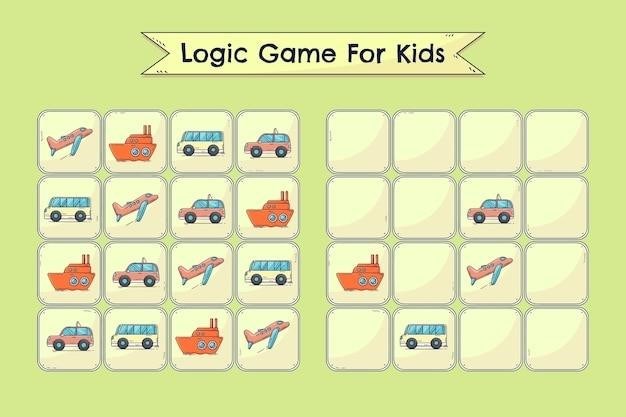Finding Free Piano Sheet Music PDFs
Numerous websites offer free piano sheet music PDFs. These sites often boast large collections, encompassing various genres and skill levels. Popular choices include MuseScore.com and Free-scores.com, providing diverse options from classical pieces to modern pop songs. Remember to always check the licensing before downloading.
Popular Websites for Free Sheet Music
The internet offers a treasure trove of websites dedicated to providing free sheet music, catering to pianists of all levels. While many sources exist, some stand out for their extensive libraries and user-friendly interfaces. MuseScore.com, for instance, is a well-known platform renowned for its vast collection of public domain and user-submitted scores. Its intuitive search functionality allows users to easily find specific pieces or explore various genres. The site also supports different formats, including PDF, making it accessible across various devices and software.
Another reputable website is Free-scores.com, a platform that prioritizes a clean and organized layout. It houses a considerable number of piano sheet music pieces, ranging from classical compositions to modern arrangements. The website’s easy navigation ensures a smooth browsing experience, allowing users to quickly locate desired scores based on composer, title, or difficulty level. Similar to MuseScore.com, Free-scores.com offers downloads in PDF format, which is a universally compatible format for sheet music.
These platforms represent just a fraction of the numerous websites offering free piano sheet music. However, they are excellent starting points for pianists seeking easily accessible and legally sound resources. Remember to always verify the licensing information before downloading and using any sheet music.
Legal Aspects of Downloading Free Sheet Music
Navigating the legal landscape of free sheet music downloads requires careful attention. While many websites offer free scores, understanding copyright laws is crucial to avoid infringement. Public domain works, those whose copyrights have expired, are freely available for download and use. However, many modern compositions remain under copyright protection, meaning their distribution without permission is illegal. Websites offering free sheet music often indicate whether a piece is in the public domain or if it’s been licensed for free distribution by the copyright holder.
Always check the licensing information provided by the website. Look for clear statements about copyright status and permitted uses. Some websites may offer free downloads for personal use only, prohibiting commercial use or redistribution. Respecting these restrictions is vital to avoid legal repercussions. Downloading and using copyrighted material without permission constitutes copyright infringement, potentially leading to legal action from the copyright holder.
To ensure compliance, prioritize websites transparent about licensing. If unsure about a piece’s copyright status, err on the side of caution and seek alternative sources. Remember that respecting intellectual property rights is essential for supporting musicians and upholding ethical practices within the music community. Understanding these legal nuances helps ensure a responsible approach to accessing and utilizing free sheet music resources.
Different Formats Available (PDF, MIDI, etc.)
Free piano sheet music is available in a variety of digital formats, each offering distinct advantages. The most common format is PDF (Portable Document Format), providing a visually accurate representation of the sheet music, ideal for printing or viewing on screen. PDFs preserve the formatting and layout, ensuring readability and ease of use. Many websites offer sheet music exclusively in PDF format, making it a standard choice for printed scores.
Another popular format is MIDI (Musical Instrument Digital Interface), a digital audio format that stores musical information as data rather than a visual representation. MIDI files are not visually appealing like PDFs but are useful for playback on electronic keyboards or music software. They can be manipulated and edited, changing tempo, instrumentation, or other musical aspects. Many websites offering sheet music in PDF format may also include MIDI files.
Some websites might offer additional formats such as MusicXML, a more versatile format enabling editing and modification of the musical notation within dedicated music notation software. Others might offer audio files, like MP3s, providing a reference audio track for learning and practicing the piece. The availability of different formats allows for flexibility, catering to various needs and preferences depending on the user’s tools and intended use of the sheet music.
Exploring Music Genres and Skill Levels
Free sheet music caters to diverse tastes and abilities. Find classical pieces by renowned composers or popular song arrangements. Many sites offer beginner-friendly options alongside challenging scores for advanced pianists. Explore a wide range of genres!
Classical Music for Piano
The realm of classical piano music offers a vast and rewarding landscape for pianists of all levels. From the elegant simplicity of a Mozart sonata to the dramatic intensity of a Beethoven concerto, the depth and breadth of the classical repertoire are unparalleled. Many websites dedicated to free sheet music provide access to a treasure trove of classical compositions, allowing aspiring musicians to explore the works of masters such as Bach, Chopin, Debussy, and many more. These online resources often categorize pieces by composer, period, or difficulty level, making it easy to find suitable selections for one’s skill and interest. The availability of these scores in PDF format allows for convenient printing and practice, bringing the richness of classical music directly to the fingertips of those eager to learn and perform.
Whether you are drawn to the intricate counterpoint of Bach’s inventions, the romantic lyricism of Chopin’s nocturnes, the evocative impressionism of Debussy’s preludes, or the powerful expressiveness of Beethoven’s sonatas, the world of classical piano music is readily accessible through numerous online resources offering free sheet music. These resources provide a valuable opportunity to explore the history and evolution of this genre, developing a deeper appreciation for its enduring beauty and complexity. The ability to download and print these scores easily opens up a universe of musical possibilities, allowing pianists to embark on a journey of discovery and artistic growth.
Popular Music Arrangements for Piano
The world of popular music offers a vast and diverse range of songs perfect for piano arrangements. From classic rock anthems to contemporary pop hits, countless tunes have been adapted for the piano, providing a rich source of material for pianists of all skill levels. Many websites dedicated to free sheet music offer a wide selection of popular song arrangements, catering to various tastes and preferences. These arrangements often simplify complex musical structures to make them accessible to beginners while still retaining the essence of the original songs. Whether you’re a fan of classic rock, soulful R&B, upbeat pop, or mellow acoustic tunes, you’re likely to find piano arrangements that match your musical inclinations.
These readily available online resources open a world of possibilities for pianists who enjoy playing popular music. The ease of accessing these scores in PDF format makes it convenient to print and practice favorite songs. Learning popular music arrangements can be a fun and engaging way to improve piano skills, as it often involves mastering different rhythms, chords, and melodies. The ability to play well-known songs can also be immensely satisfying, allowing pianists to connect with their musical passions in a personal and expressive way. Furthermore, these arrangements provide a valuable opportunity to explore different musical styles and expand one’s repertoire beyond the classical tradition.
Beginner to Advanced Sheet Music
Finding free piano sheet music catering to all skill levels is readily achievable online. Numerous websites offer a graded system, categorizing pieces from elementary to advanced levels. Beginner sheet music typically features simplified melodies, basic chord progressions, and fewer notes per measure, making them ideal for novice pianists learning the fundamentals. These simplified versions allow beginners to focus on developing essential skills such as hand coordination, finger dexterity, and rhythm while enjoying the satisfaction of playing recognizable tunes. As skill progresses, intermediate arrangements introduce more complex rhythms, chord voicings, and musical nuances, challenging pianists to expand their technical abilities and musical expression.
For advanced players, the options expand dramatically. These arrangements might incorporate intricate passages, complex harmonies, and demanding technical challenges. Such pieces often require a high level of proficiency and musical understanding to perform effectively. The availability of free sheet music across all skill levels democratizes access to a rich musical world. Whether you are a complete beginner taking your first steps on the piano or an experienced musician seeking challenging new repertoire, free online resources can provide a springboard for musical exploration and growth. The ability to freely explore and progress through different levels of difficulty encourages continuous learning and personal development in musicianship.
Additional Resources and Tips
Explore online communities for sharing sheet music and finding additional resources. Consider using software like MuseScore for viewing and editing PDFs. Public libraries or office supply stores offer convenient printing options for your downloaded scores.
Printing Your Downloaded Sheet Music
Once you’ve successfully downloaded your free piano sheet music PDFs, the next step is printing them for convenient practice. Several options are available, catering to different needs and budgets. For those seeking a quick and easy solution, many local libraries offer public printing services, a cost-effective way to obtain clean, crisp copies of your sheet music. This is particularly useful if you only need a few pages printed or prefer not to invest in a home printer. Alternatively, numerous office supply stores, such as Staples or OfficeMax, provide customer-accessible computers and printers, allowing you to print your sheet music directly from your downloaded PDF. These stores typically charge a per-page fee, providing flexibility for printing larger quantities of sheet music. Another viable option is utilizing mailing and shipping stores like FedEx or UPS, which often feature customer-accessible computers and printers, offering a similar service to office supply stores. Consider the convenience and cost of each option when making your decision. Remember to check the print settings before printing to ensure optimal quality and readability of your sheet music, and select a paper type suitable for music notation.
Software for Viewing and Editing Sheet Music
While many users find PDF viewers sufficient for simply viewing downloaded sheet music, dedicated software offers enhanced functionalities for a more enriching musical experience. MuseScore, a prominent example, stands out as a free and open-source music notation program compatible with Windows, macOS, and Linux. This versatile software not only allows for seamless viewing of your downloaded PDFs but also provides tools for editing and creating your own musical scores. Its user-friendly interface makes it accessible to both beginners and experienced musicians. Beyond MuseScore, various other software options cater to different needs and preferences. Some offer advanced features like score transcription, audio playback, and integration with digital audio workstations (DAWs), while others focus on simplicity and ease of use. The choice of software depends on individual requirements and technical expertise. For basic viewing, a simple PDF reader suffices; however, for editing, composing, or enhanced interactive features, investing time in exploring specialized music notation software is highly recommended. Free trials often allow users to test various programs before committing to a paid version, providing a valuable opportunity to discover the best fit for your musical workflow.
Community Platforms for Sharing Sheet Music
The internet fosters vibrant communities centered around music sharing. Platforms like Musescore.com act as central hubs, connecting creators and enthusiasts. These platforms allow users to upload, download, and share sheet music freely, fostering collaboration and a sense of community among musicians. Musescore.com, for instance, boasts a vast library of user-submitted scores, spanning various genres and skill levels. This collaborative environment benefits both amateur and professional musicians. Beginners can access a wealth of free resources, while experienced musicians can contribute their creations, potentially inspiring others. The social aspect is a key element, allowing users to connect with like-minded individuals, exchange feedback, and even collaborate on projects. Beyond Musescore.com, numerous other online communities exist, each offering unique features and focuses. Some might specialize in specific genres, while others cater to particular instruments or skill levels. Exploring these diverse platforms expands access to a wider range of sheet music and fosters connections within the broader music community. The ability to share and receive feedback directly from other musicians adds a valuable dimension to the learning and creative process.





